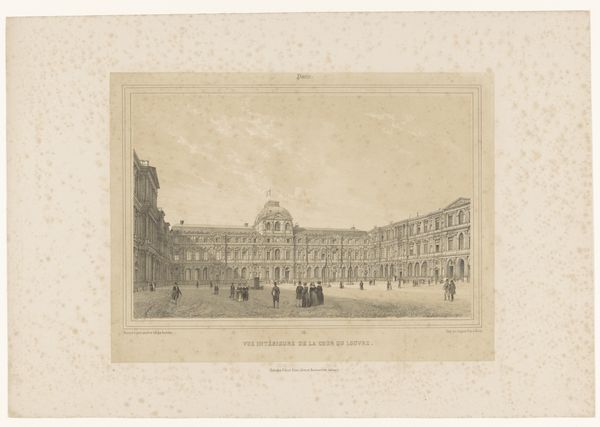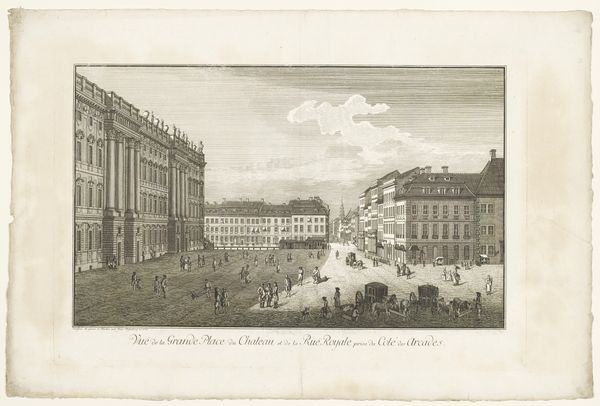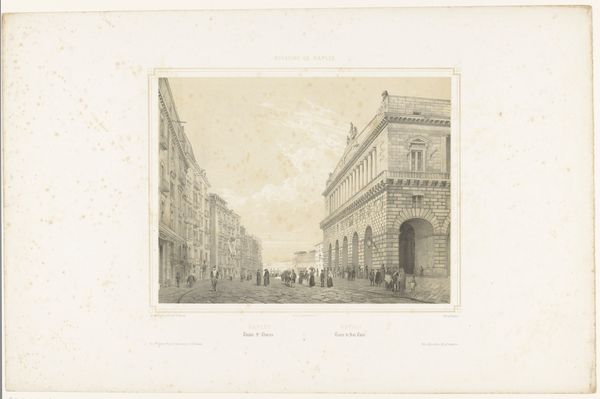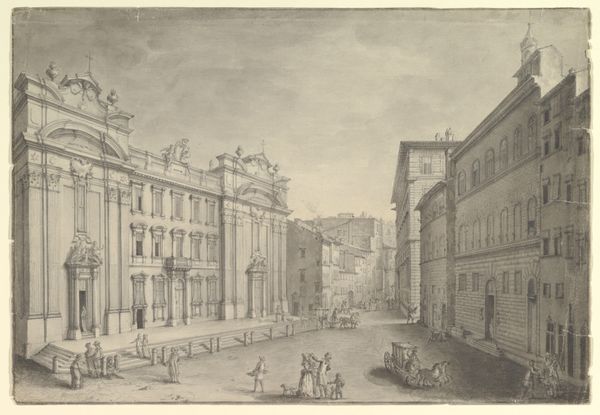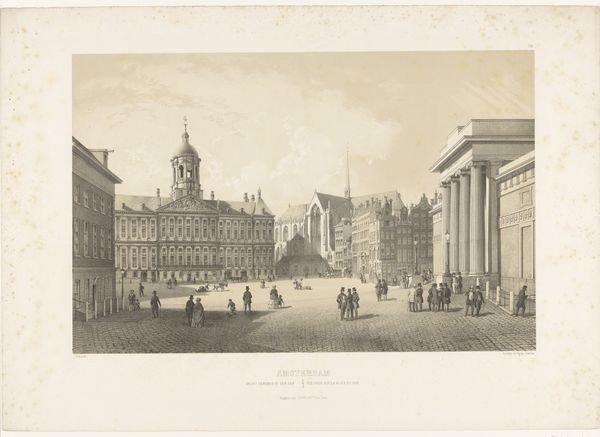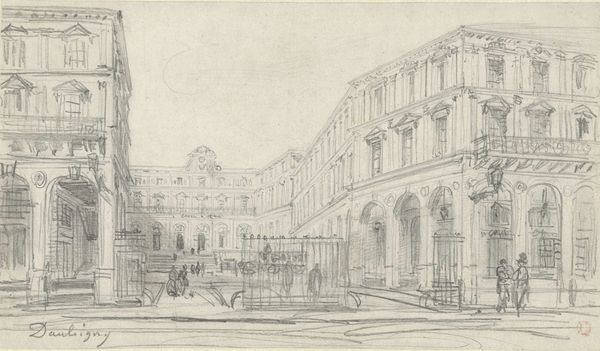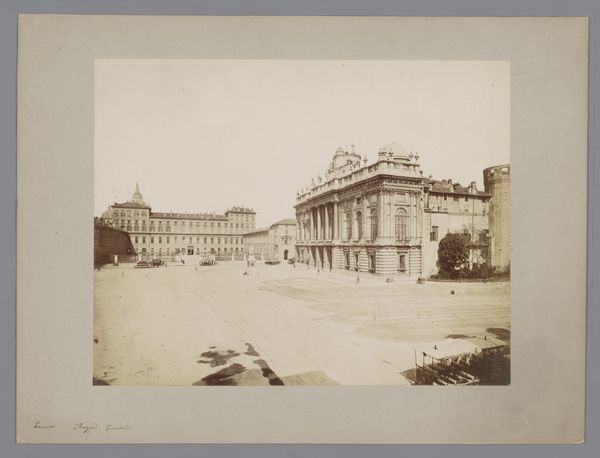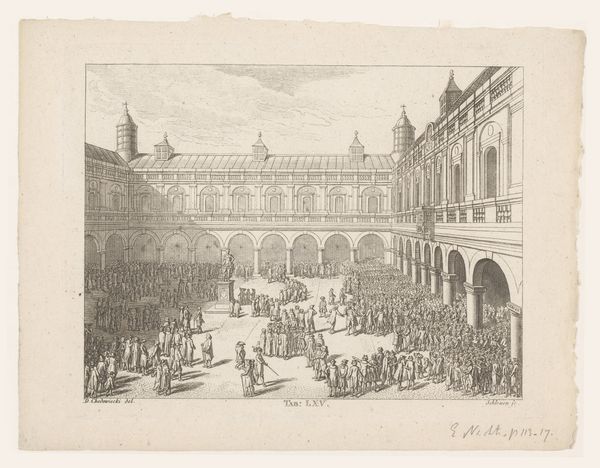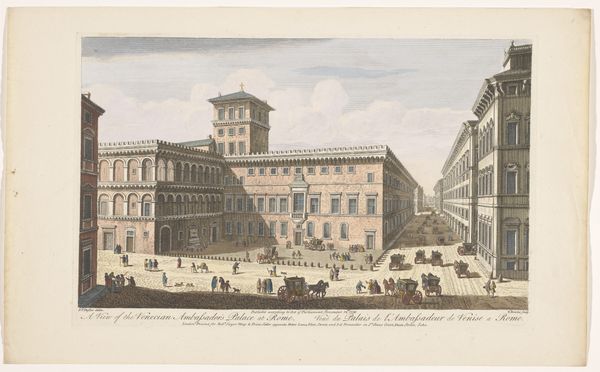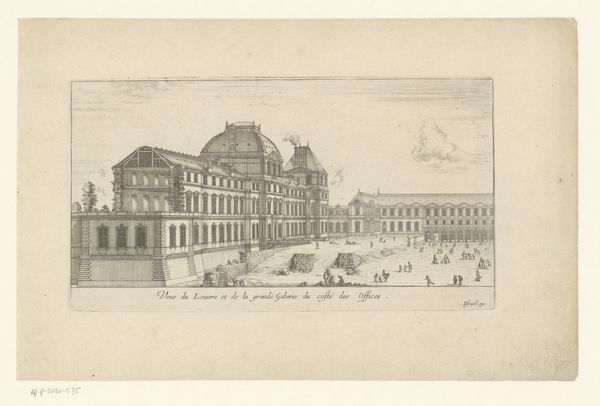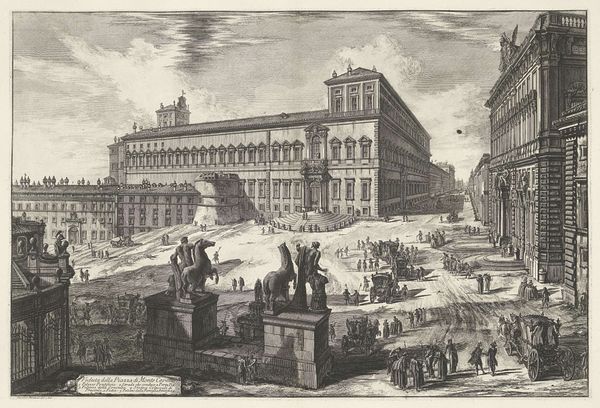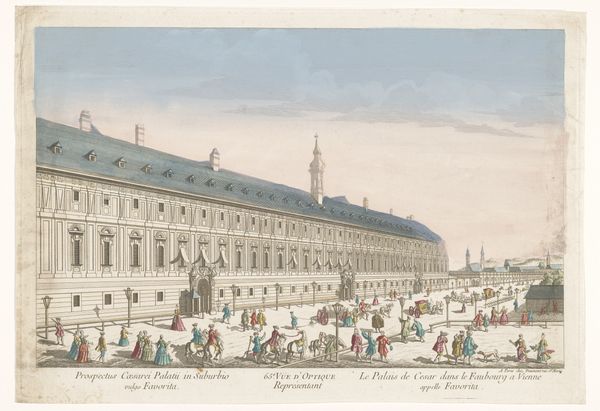
drawing, print, etching, paper, pencil, architecture
#
drawing
#
neoclacissism
# print
#
etching
#
landscape
#
etching
#
paper
#
pencil
#
cityscape
#
architecture
Dimensions: height 397 mm, width 568 mm
Copyright: Rijks Museum: Open Domain
Louis Jules Arnout’s print captures the Cour Carrée of the Louvre, likely around the middle of the 19th century, using a detailed etching technique. As the Louvre transitioned from royal palace to public museum, images like this one served to document and promote its architectural grandeur and its role as a space for civic engagement. Arnout's choice to depict the courtyard with figures strolling through emphasizes the building's new social function. The Louvre, initially a symbol of royal power, was repurposed during the French Revolution to democratize art and culture. This etching, therefore, participates in a visual narrative of institutional transformation. Understanding the Louvre's history, and France’s history is crucial here. By consulting archives, architectural plans, and period accounts, we gain a deeper appreciation of Arnout's work as a cultural document, one that captures a pivotal moment in the history of both art and French society.
Comments
No comments
Be the first to comment and join the conversation on the ultimate creative platform.
